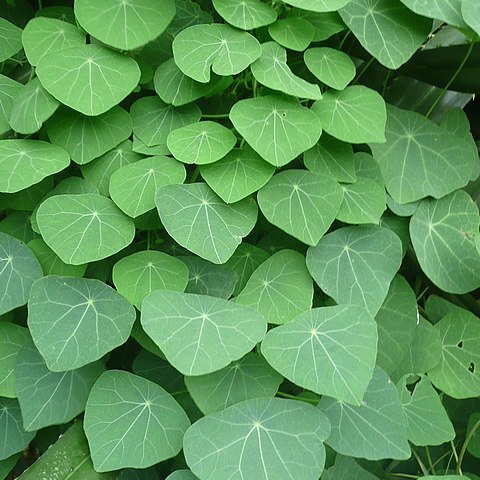Climbers, mostly slender. Stems woody or herbaceous. Roots sometimes tu-berous. Leaves with petioles usually geniculate at base; lamina peltate, usually ± ovate to suborbicular, palmately 8-13-nerved. Inflorescences axillary or arising from old, leafless stems, usually composed of peduncled umbelliform cymes which are solitary or racemosely arranged, at least the lst(-2nd) orders of branching umbellate (in Mal. spp.), the ultimate branching sometimes irregu-lar, or sometimes the cymes condensed to disciform capitula. Male flowers symmetrical: sepals free, imbricate, 6 or 8 in two equal or unequal whorls, or only 2-3 in S. capita ta, usually ± obovate; petals free, 3 or 4 or 2-3 in S. capi-tata, usually ± broadly obovate with lateral margins often involute; stamens connate into a peltate synandrium, anther-cells 4-8 dehiscing transversely. Female flowers symmetrical or asymmetrical: sepals 1-8, petals 2-4, both simi-lar to male; carpel 1, style very short or absent, stigma shortly lobed or divari-cately laciniate. Drupes obovoid with style-scar near base, glabrous; endocarp bony, dorsally bearing a horseshoe-shaped band of 2 or 4 longitudinal rows of processes or transverse ridges, condyle often perforate. Seed horseshoe-shaped. Embryo with cotyledons ± equalling the radicle, surrounded by endosperm.
Herbaceous or woody lianes, sometimes with succulent stems. Leaves simple, peltate; blade triangular, ovate or suborbicular. Male inflorescences of panicles, false umbels or hemispherical umbel-like cymes. Male flowers with 6–8 free sepals; petals 3–4, free, rarely absent; stamens 2–6, arranged in a disc-shaped stalked synandrium, round whose margin the anthers are in a horizontal ring; thecae with transverse dehiscence. Female inflorescences similar to the ♂. Female flowers with 3–6 free sepals; petals 2–4, free; staminodes usually absent; carpel 1; style small; stigma slightly lobed, or laciniate with divaricate divisions. Drupes with smooth, glabrous or hairy exocarp, endocarp subovate and compressed or reniform, truncate at base, with 2–4 rows of tubercles or ± projecting prickles, or merely with transverse ribs; the condyle somewhat concave on either side with its septum either perforated or not. Seeds with endosperm.
Climbers with woody or herbaceous stems, without prickles; root sometimes tuberous. Leaves peltate, palmately veined. Inflorescences axillary (in Australia), umbelliform or capitate, without persistent accrescent bracts. Male flowers: sepals 6 or 8 in 2 equal or unequal whorls, ± obovate, free; petals 3 or 4, ± broadly obovate, free; stamens connate into a peltate synandrium; anther cells 6–8, dehiscing horizontally. Female flowers: sepals and petals similar to male (in Australia); staminodes absent; carpel 1; stigma shortly lobed. Drupe curved, glabrous, without stipe or carpophore; style-scar near base; endocarp bearing a dorsal, horseshoe-shaped band which is tuberculate or ridged, often perforate. Seed horseshoe-shaped; cotyledons ± equalling radicle, surrounded by endosperm.
Drupe with smooth, glabrous or hairy exocarp, endocarp subovate and compressed or reniform, truncate at the base, with 2–4 rows of tubercles or more or less projecting prickles, or merely with transverse ribs; the condyle somewhat concave on either side with its septum either perforated or not.
Male flowers with 6–8 sepals; petals 3–4, free, rarely absent; stamens 2–6, arranged in a disk-shaped stalked synandrium, round the margin of which the anthers form a horizontal ring; thecae with transverse dehiscence.
Female flowers with 3–6 free sepals; petals 2–4, free; staminodes usually absent; carpel 1; style small; stigma slightly lobed, or laciniate with divaricate divisions.
Male inflorescences of panicles, false umbels or hemispherical umbel-like cymes.
Leaves simple, peltate; lamina triangular, ovate or suborbicular.
Herbaceous or woody lianes, sometimes with succulent leaves.
Female inflorescences similar to the male.
Seeds with endosperm.

